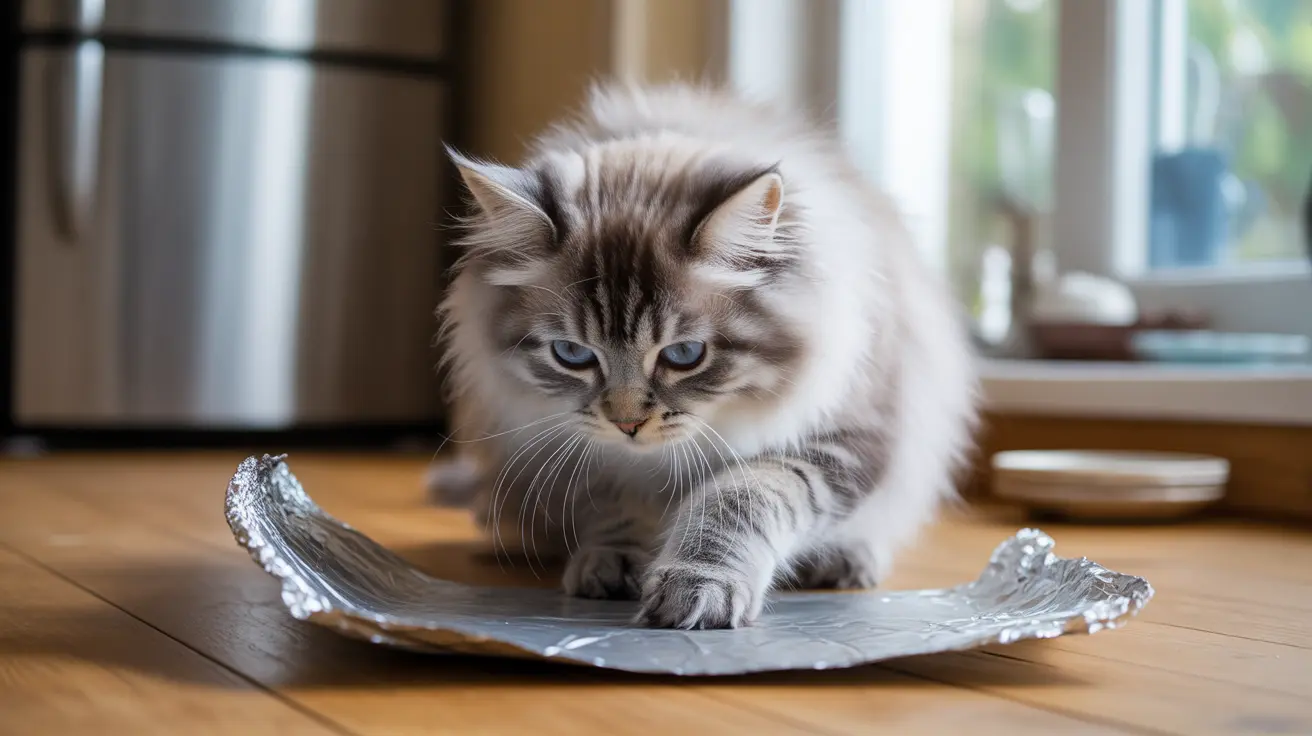If you've ever placed aluminum foil on your countertops or furniture, you may have witnessed your cat's startling reaction. Many cats display an unusual aversion to aluminum foil, leading to viral videos and widespread discussion among pet owners. But what causes this peculiar behavior, and is it truly an effective deterrent?
Let's explore the fascinating relationship between cats and aluminum foil, examining both the science behind their reactions and whether this method is truly safe and effective for managing your feline friend's behavior.
The Science Behind Cats' Reaction to Aluminum Foil
Cats' responses to aluminum foil are rooted in their highly developed sensory systems. Their reaction typically stems from three main factors:
Sensory Overload
Cats possess incredibly sensitive hearing and touch receptors. The crackling sound of aluminum foil can be particularly jarring to their acute hearing, which can detect frequencies up to 64 kHz (compared to humans' 20 kHz maximum). The unexpected noise created when stepping on foil often triggers their startle response.
Tactile Discomfort
A cat's paw pads contain numerous nerve endings that help them navigate their environment. The unusual texture of aluminum foil provides an unfamiliar sensation that many cats find uncomfortable or unsettling, leading them to avoid contact with the material.
Understanding the Effectiveness of Foil as a Deterrent
While aluminum foil can be an effective temporary deterrent, its success varies significantly among different cats:
Initial Response vs. Long-term Effects
Many cats show immediate aversion to foil-covered surfaces, but this effect often diminishes over time. Some cats may become habituated to the presence of foil, eventually ignoring it completely.
Individual Variation
Not all cats respond the same way to aluminum foil. While some may dramatically leap away from foil-covered surfaces, others might show minimal reaction or even curiosity toward the material.
Safety Considerations When Using Aluminum Foil
Before using aluminum foil as a deterrent, consider these important safety factors:
Physical Safety Risks
While generally safe, there are potential risks if cats chew or ingest pieces of foil. Monitor your cat closely when introducing foil to their environment, and remove it if they show any interest in consuming it.
Psychological Impact
Using fear-based deterrents can potentially cause stress or anxiety in sensitive cats. It's essential to monitor your cat's behavior for signs of distress when using any aversive method.
Alternative Methods for Training Cats
Instead of relying solely on aluminum foil, consider these more positive approaches:
- Provide attractive alternative surfaces for climbing and exploration
- Use positive reinforcement to reward desired behaviors
- Install cat-specific furniture in appealing locations
- Create designated "cat zones" in your home
Frequently Asked Questions
Why do cats fear aluminum foil and what sensory factors cause this reaction?
Cats react to aluminum foil primarily due to its unexpected texture, startling sound, and reflective properties. Their sensitive hearing and touch receptors make the foil's crinkly nature particularly disturbing to them.
How effective is aluminum foil for keeping cats off counters or furniture?
Aluminum foil can be effective as a short-term deterrent, but its effectiveness often decreases over time as cats become accustomed to its presence. Success varies significantly between individual cats.
Can using aluminum foil as a cat deterrent cause stress or harm to my cat?
While physically safe in most cases, aluminum foil can cause psychological stress in sensitive cats. It's important to monitor your cat's reaction and discontinue use if signs of anxiety appear.
Are all cats equally afraid of aluminum foil, or do some ignore it?
Cats vary widely in their reactions to aluminum foil. While many show initial aversion, others may be indifferent or quickly adapt to its presence.
What are safer and more humane alternatives to deter cats from unwanted areas besides aluminum foil?
More humane alternatives include providing cat trees and designated climbing spaces, using positive reinforcement training, and creating engaging environmental enrichment options for your cat.
Conclusion
While aluminum foil can serve as a temporary deterrent for some cats, it's not a universal solution for managing feline behavior. Understanding your cat's individual response and considering more positive, long-term training methods will likely yield better results for both you and your pet.
Remember that the goal is to create a harmonious living environment that respects both your needs and your cat's natural behaviors. Focus on positive reinforcement and environmental enrichment rather than relying solely on deterrents like aluminum foil.






